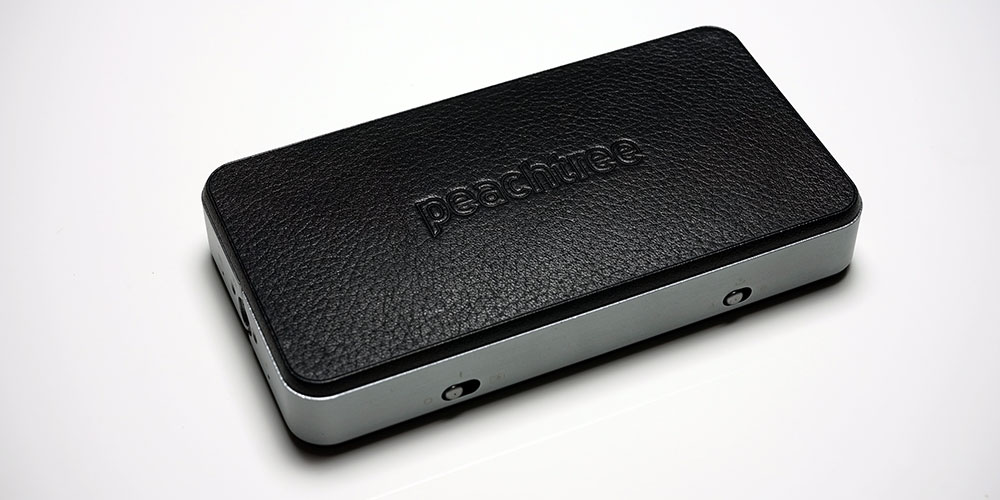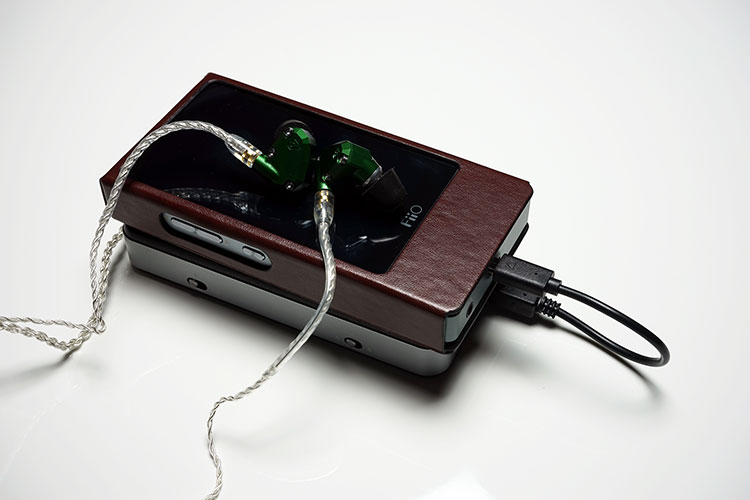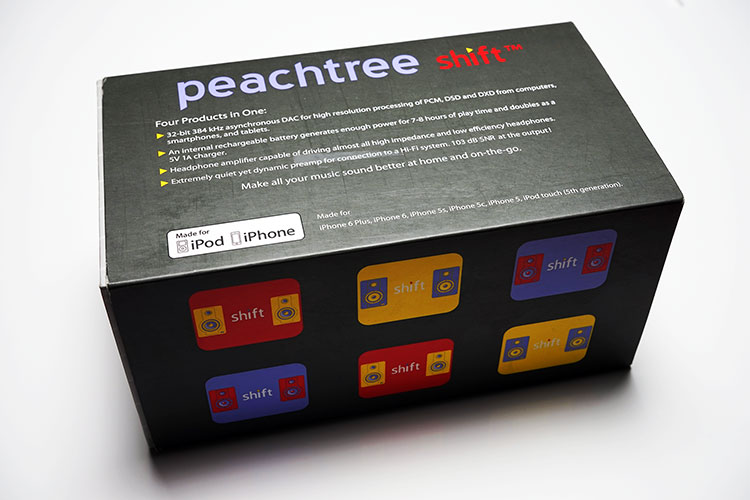Sound Impressions
Tonality
Tonally the Shift offers a warm to neutral musical presentation with a smooth sounding and an almost analog type feel rather than any typical cold digital response. It has a fairly full sounding low end with a forward sounding midrange, realistic vocal presence and a slightly laid back and forgiving treble presence. The Shift tonally is quite different to say the HA-2 which has a colder more neutral presentation and plenty of treble sparkle. It is actually more in keeping with the mDSD from Sonic Unity which uses the same DAC chip but with a bit more low-end slam and body.
Resolution and detail are very good, though not quite at ESS9018 level but what it does offer is clear and natural sounding, particularly in the mid-range. Soundstage wise the Shift presents a fairly narrow and small intimate stage. It is not so spacious sounding particularly with IEMs where dynamics take a dip but it does open up considerably more with headphones and the sweet spot seems to be around 32 ohms where is very engaging particularly with modern rock and pop genres.
Matchability
Efficiency
For ultra-efficient IEMs such as the Campfire Audio range (think Jupiter and Andromeda), the SE846, and the less pricey Oriveti Primacy the Shift actually has pleasing levels of low noise on low gain with a fairly silent background. This makes it more than flexible on a technical level for driving most IEMs quietly and with a decent level of source volume control.
However, in contrast to how open it sounded on headphones, the Shift sounded a little more compressed and less spacious sounding on IEMs with a darker and slightly more veiled sound. IEMs such as the Primacy and Jupiter had a greater emphasis on their bass response compared to the more balanced signature I was getting on higher impedance headphones. Switching to more power hungry earphones such as the planar driven oBravo ERIB-5A simply amplified that compressed sound sounding incredibly uneven on high or low gain.
Probably the best match I had was with earbuds believe it or not and in particularly the $170 Astrotec Lyra 6 which had a more open and natural sounding signature in comparison to the IEMs I tested. It’s still not as dynamic sounding as I would like but far less compressed than either the oBravo or as bass heavy as the Primacy.
Power
This is the Shifts trump card in many ways and something which other portable DAC/Amps, by comparison, cannot touch. If you are undecided on the Shifts tonal qualities using IEMs or efficient headphones, slap on a planar or mid-range headphone and compare to something like the Picollo. There is just no comparison, the Shift is by far the more powerful and dynamic DAC/Amp and can easily get decent volume on say an LCD-2 without even breaking a sweat. I would not go as far as to say to ditch your desktop 5-watt Class A amp, the Shift is good but not balanced desktop good. The power ratings do suggest though that the Shift would be happier driving headphones over IEMs and that proves to be the case.
Planars
The Shift can, well, shift! The HA-2 can drive the LCD-2 but the difference in volume settings compared to the Shift is huge. At 30% volume setting on Foobar the HA-2’s analog pot was at 100% with average dynamics, it simply couldn’t fill the LCD-2 rev 2 at that level quite like the Shift could.
I had to push Foobar’s volume up to 50-60% and higher to get adequate volume and dynamics on the LCD-2. Dropping the HA-2’s pot to around 50% or less brought Foobar’s volume up to 75%. Both units were on high gain for that test. Tonally the Shift is a blast on the LCD-2 rev 2 by the way. Plenty of dynamics, decent treble performance, strong vocal presence though with a tiny bit of sibilance. It is not quite as gutsy down below as say the Bakoon HPA-01M or a balanced desktop but it not anemic either.
More demanding planars such as the HE1000 need just a little more juice with Foobar sliding up to 60% on high gain with this pairing and the Ether C just slightly behind on 50%. The HE1000/Shift pairing is a little more forgiving tonally with decent dynamics and a warm to neutral presentation but sadly the Ether C might be a step too far sounding with almost no low-end response and a slightly compressed sound. The Shift seems more at home with Audeze’s slightly easier to drive range of cans, the OPPO PM range and Hifiman’s more efficient planars such as the HE400S and HE400i.
Dynamic Headphones
The Shift has zero problems getting an adequate volume with more demanding dynamic headphones such as the HD800 and T1 though in terms of dynamics and fullness of sound I think the HD800 and T1 would be better served with desktop variants that can fill them out better. It does, however, serve as a useful benchmark. Dropping down to around 32ohms and the Shift produced a more confident and dynamic display on a lower volume setting with the likes of the AKG K812 and other less demanding dynamic cans such as the Philips A5-Pro, the Meze 99 Classic and the DT1770.
Tonally the Meze 99 Classic had the best tonal fit with the K812/Shift pairing doing little to control the K812’s peaky treble. I would rate the tonal pairing with the 200 ohm DT1770 just behind the Meze 99 Classic. The power is there, soundstage is there and tonally it sounded very clean but in comparison, it is slightly drier than the 99 Classic and vocals are not quite as rich sounding. If you are using the Shift with EDM though the DT1770 is a more powerful choice. With the 32 ohms Meze 99 Classic you can drop down to low gain 60% on Foobar and get a musical engaging presentation with just the right amount of brilliance in the signature from the Shift.
Select Comparisons
Oppo HA-2
$299
Form
It’s the most obvious comparison to start with. Both have a similar price point, similar form factor and even down to the styling with the leather finish. To be honest the Peachtree proper leather finish is a little subtler and more premium looking. I never did like the HA-2 style leather “wrap” as much. The HA-2 though is half the width of the Shift and makes for a more compact stack with the iPhone or Android platform of your choice.
Function
Functionality is very similar also with both supporting dual USB at the rear and a switch to control both for charging and DAC out functionality from PC/MAC/iOS/Android platforms. Both have gain control switches as well as line out and headphone jack outs. The Shift, however, uses a single output jack port with a control switch for line out or headphone use whereas the HA-2 has two jack outputs, one for each function. Importantly the HA-2 has its own dedicated volume control (pot) whereas the Shift volume is controlled via your source.
Both come laden with plenty of accessories and cables though the HA-2 has that unique VOOC rapid charging technology that allows it to charge in about an hour compared to the Shift which has a standard charge of about 2-3 hours via USB or an AC with USB. Battery life is similar on both with the HA-2 rated at 7 hours using the DAC and the Shift slightly ahead at 8 hours. and both units can act as portable battery banks.
Sound
The tonal difference between the two is not night and day actually but there are some subtle differences worth pointing out. I would give the HA-2 the slight edge in resolution and detail with slightly superior dynamics and more heft in the low-end response. Treble is a bit more forward on the HA-2 but suffers from lower treble glare and a cooler sound than the slightly more laid back and smoother Shift presentation. The Shift sounds more analog to me with a slightly sweeter mid-range and vocal presentation. It has a smoother sound but lacks a little bit of top end sparkle and extension in comparison to the HA-2.
Cypher Labs Picollo DAC/AMP
$399
Form
Short stubbier classic amp design from Cypher Labs and comes in black or gold colors. It also comes in a snazzy case but its more for transportation than the Shift leather pouch which can be used on the go. It is nothing like the Peachtree in looks and is going to appeal far more to the traditionalists than the new generation smartphone audiophiles. It’s simply awful to stack with compared to the Shift with smartphones but perfect for smaller DAPs such as the AK100/AK120 MK1, FiiO X1/X3/X5 form factors.
Function
In terms of functionality the Picollo can DAC out from a PC and Mac much like the Shift as well as interface with Android devices and take an analog line in which the Shift cannot. Both have gain switches with the Picollo allowing you to pick 3 stages (high, medium and low) compared to the Shift which has but two (low and high).
However, the Picollo cannot interface and DAC out from iOS devices and sampling-wise it is really gimped at just 16/44 decoding as its highest level due to the Texas Instruments PCM2704 DAC at its heart. True enough Android does throttle sampling but the PC does not so the Shift pushes way ahead here with its more advanced ES9010-K2M chip. Power wise though both the Shift and Picollo are similarly capable with the Picollo a shade behind at 60mW into 300 ohms and the Shift at 65mW into 300 ohms.
Sound
Technically the chip in the Piccolo maybe a bit limited but tonally it is a very sweet warm to neutral sound with a nice full sounding low end that stays relatively linear and avoiding any mid-bass elevation. By comparison, the Shift is little more neutral and drier sounding. You do get a decent extension on the Picollo but not as much as the Shift which has a more aggressive low-end response and a bit more slam in comparison. Neither the Shift or the Picollo have the most strident or forward trebles so both are reasonably forgiving with lossy or badly recorded material. The resolution, detail, and dynamics are firmly in the Shift’s corner even when dropping down to 16 bit sampling it just has far more to offer.
One last thing. I have always found the Picollo to be one of the nicest and smoothest IEM portable amps out there, but with the CA Jupiter IEM, the Shift exhibited less noise than the Picollo during testing which surprised me.
Sonic Unity mDSD
$99
Form
It’s a fiscal miracle Sonic Unity can fit all this tech and the same DAC chip as the Peachtree Shift with an optical and headphone jack out as well as a dedicated digital volume control and keep it as small as it is as well as pegging the price to just $99. I have yet to see anything beat that and churn out sampling rates as high as DSD256 and that includes the Shift which tops out at DSD128.
Function
It does lack the power bank features of the Shift though and it has no dedicated power supply inside its USB-like form factor so it’s entirely dependent on power being drawn from your source, be it a desktop PC or portable iOS or Android. You do also need a CKK cable to connect the mDSD to an iOS device, unlike the Shift which will plug in directly with the included lightning cable. Also whilst the mDSD packs a decent punch it cannot compete with the power of the Shift with headphones. Yes, it is sensitive enough to handle efficient IEMs and can give you volume on an Ether C but the Shift can give you a lot more with power hungry cans than the mDSD.
Sound
Tonally the mDSD is a bit more intimate sounding and a degree further into the analog sounding camp than the Shift was in comparison to the HA-2. Apart from having a larger and more 3-D soundstage the Shift has better dynamics and imaging and a stronger low-end response than the slightly flatter sounding mDSD. Both show full sounding with a degree of mid-bass elevation but the greater impact and body is with the Shift. It just sounds more convincing with pop, rock, and dance. I do like the slightly flatter response of the mDSD for jazz and acoustics though.
Our Verdict
I think Peachtree made the right decision bringing out the Shift right now simply because to ignore this new but very dynamic market would be silly really. The Shift ticks pretty much most of the boxes I would be looking at in terms of an audiophile portable Amp/DAC today. You have iOS and Android capability, DAC out from PC and MACS and a fairly decent battery and power bank option for charging your source on the go.
It may well be slightly thicker than some of the competition but it feels just as well made with a nicer “cut” of Canadian cow leather on the top and bottom. Once you read the manual it is dead easy to operate and comes with a lovely case and a simple but very effective selection of cables for hooking to the source of your choice. It is a thoroughly modern product package that is very easy to setup.
The Shift though is more at home with portable headphones and efficient planars, sounding compressed and slightly muted by comparison with IEMs. It feels more expressive with headphones such as the Meze 99 Classic dynamic driver, the Beyer Dt1770 and planars such as the PM-3, HE400s, and even the LCD-2. Those looking for a portable DAC/Amp to match these type of headphones will get a natural full sounding response and this is where I would place the Shift rather than pairing with efficient earphones. Having said that noise performance is excellent for both IEMs and headphones alike.
Shift Technical Specifications
Made for
- iPhone 6 Plus, 6, 5s, 5c, iPod touch (5th generation)
Android Compatibility
Shift works with Android devices that support USB OTG (On-The-Go) and USB Audio Class 2.0. Not all devices are compatible.
PC Compatibility
Apple Mac OS X 10.6.4 and later
Microsoft Windows XP and later
Audio Signal Compatibility
PCM 16, 24 and 32-bit @ 44.1, 48, 88.2, 96, 176.4, 192, 352.8 and 384kHz
DSD @ 2.8 and 5.6 MHz
Specifications
Signal-to-Noise Ratio: 103dB unweighted (20Hz-22kHz)
Output Impedance: 1Ω
Headphone Output Level (@1kHz):
- 230mW into 16Ω
- 136mW into 32Ω
- 65mW into 300Ω
Line Output Level: 1.8Vrms
Accessories included
Lightning Cable
Android Crossover/OTG Cable
USB Cable
Leather Carrying Case
Dimensions and Weight
Length: 5.0″ (127mm)
Width: 2.6″ (67mm)
Height: 0.9″ (24mm)
Weight: 6.5oz (184g)
Warranty
One year parts and labor




